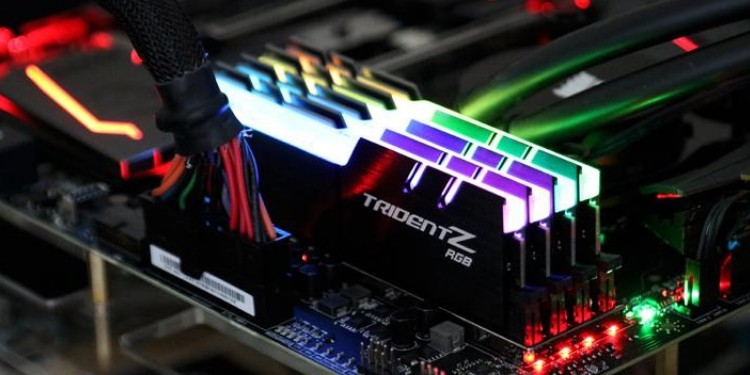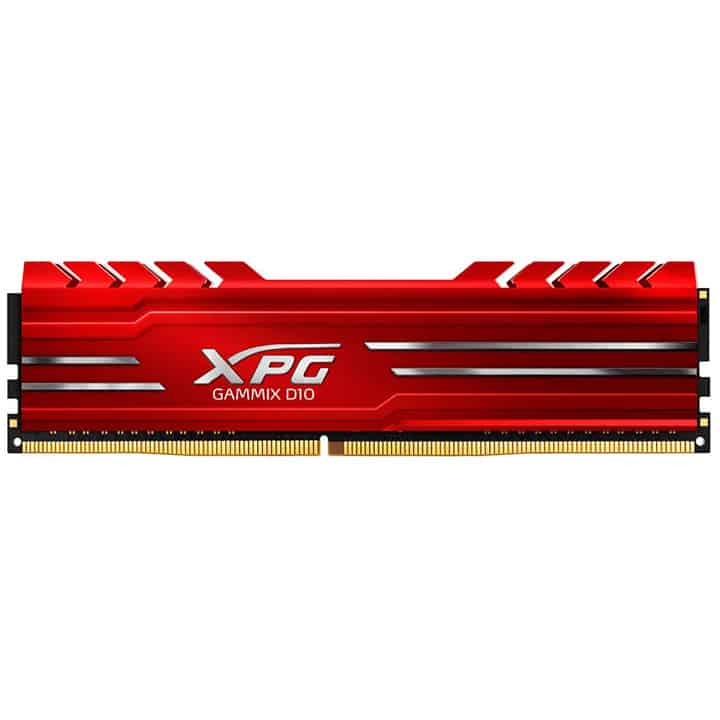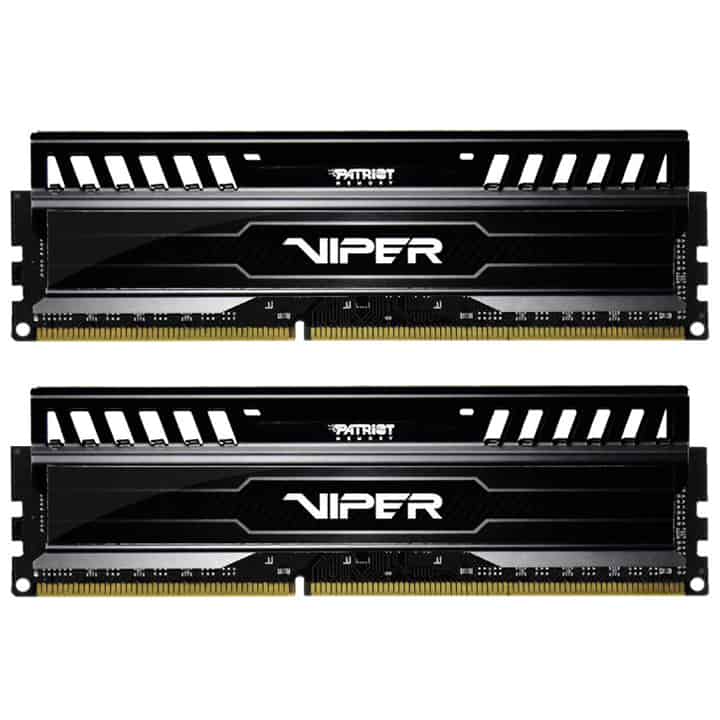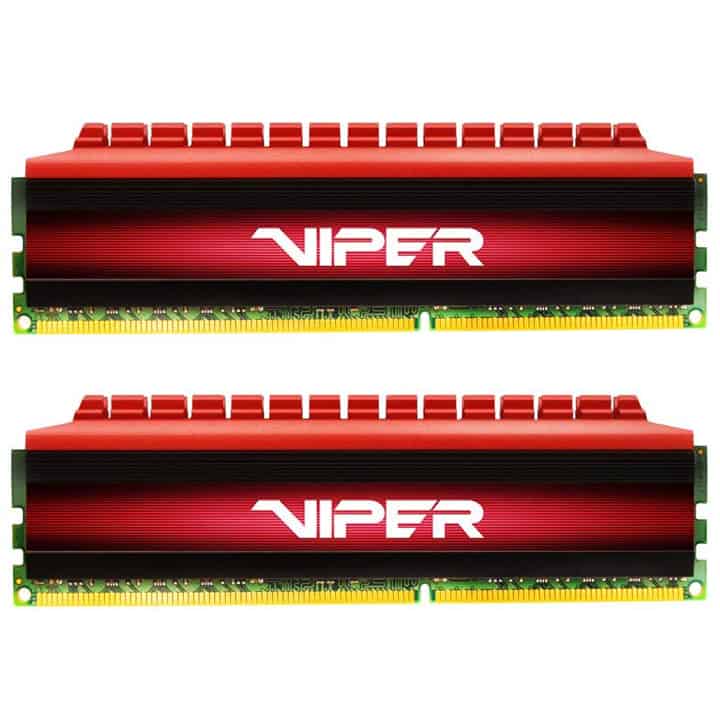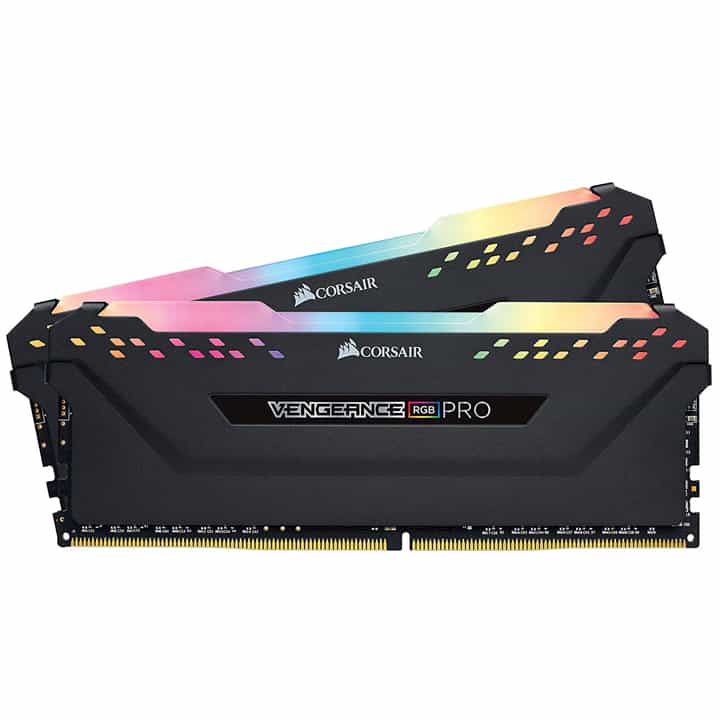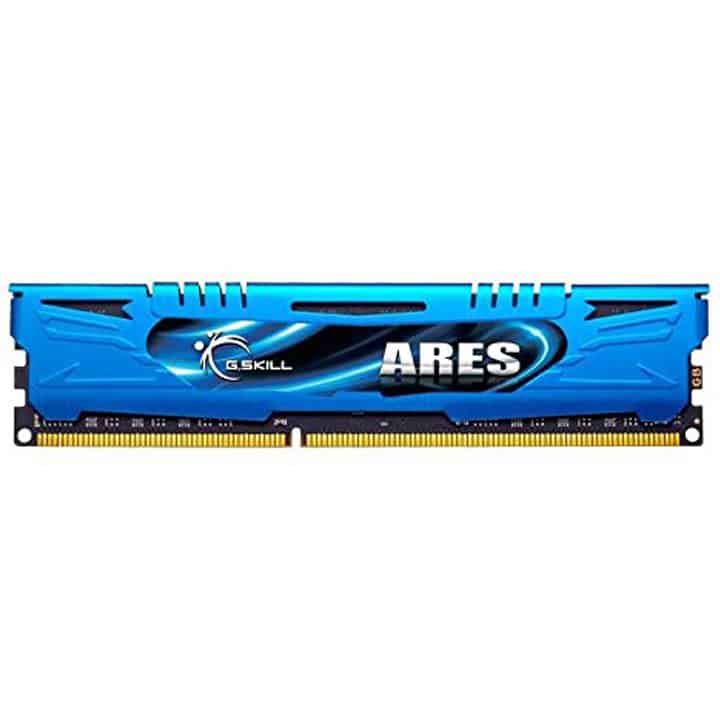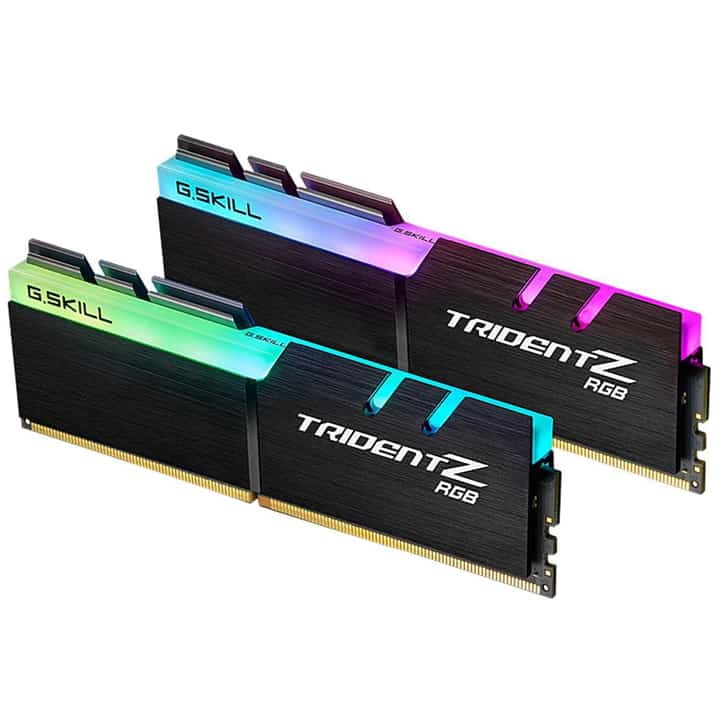RAM has become one of the most hotly-touted specs in hardware, but there isn’t actually much understanding of what it means beyond “more is better”. While we aren’t here to argue this assessment, we are here to make sure that you buy the best RAM sticks for you, especially if you want to have a great gaming experience.
Whether you’re here looking for budget RAM kits or the fastest RAM on the market, we have you covered. If you aren’t really sure what to look for, that’s okay too. We’ve added a buyer’s guide to the bottom of the article that you can use to help make sense of all these specs and choose the right RAM for you.
best budget
Crucial Ballistix Sport LT 8GB DDR4-2666
- Capacity: 8GB
- Standard: DDR4
- Speed: 2666 MHz
- CAS: 16
- Configuration: 2x4GB
Fair price
ADATA XPG Gammix D10 16GB DDR4-2666
- Capacity: 16GB
- Standard: DDR4
- Speed: 2666 MHz
- CAS: 16
- Configuration: 2x8GB
Great pricing
Patriot Viper III 16GB DDR3-1866
- Capacity: 16GB
- Standard: DDR3
- Speed: 1866 MHz
- CAS: 10
- Configuration: 2x8 GB
best value
Patriot Viper 4 16GB DDR4-3000
- Capacity: 16GB
- Standard: DDR4
- Speed: 3000
- CAS: 18
- Configuration: 2x8GB
best RGB RAM
Corsair Vengeance RGB Pro 16GB DDR4-3000
- Capacity: 16GB
- Standard: DDR4
- Speed: 3000 MHz
- CAS: 15
- Configuration: 2x8GB
fastest DDR3 RAM
G.Skill Ares 8GB DDR3-2400
- Capacity: 8GB
- Standard: DDR3
- Speed: 2400 MHz
- CAS: 11
- Configuration: 2x4 GB
fastest DDR4 RAM
G.Skill TridentZ RGB Series DDR4-4266
- Capacity: 16GB
- Standard: DDR4
- Speed: 4266 MHz
- CAS: 19
- Configuration: 2x8GB
Table of Contents
1. Crucial Ballistix Sport LT 8GB DDR4-2666
The best budget RAM is this kit from Crucial
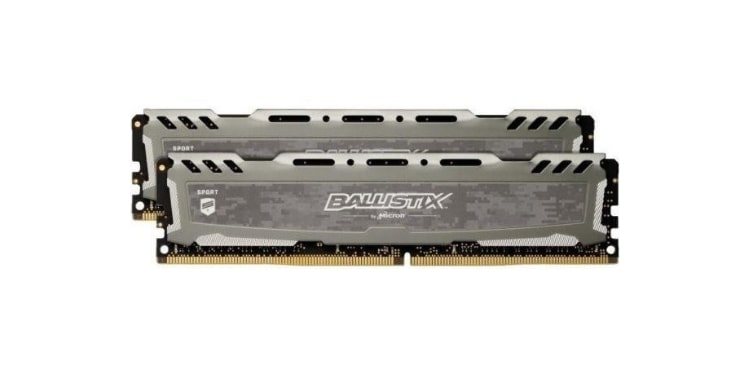
- Capacity: 8GB
- Standard: DDR4
- Speed: 2666 MHz
- CAS: 16
- Configuration: 2x4GB
- Low price
- Slight bump above standard clock speed
If you want the best budget RAM, look no further: the Crucial Ballistix Sport LT Kit has you covered. This DDR4 RAM kit comes with two 4GB DIMMs, each rated to run at 2666 MHz- which is slightly above the 2400 MHz standard for DDR4 RAM. While this 266 MHz difference won’t make a massive performance difference, it is a nice-to-have and it does indicate higher quality than most budget DDR4 RAM sticks, which target lower clocks.
When buying PC RAM cheap, it’s always important to buy from a reputable manufacturer. Fortunately, manufacturers like Crucial, ADATA, and Patriot always seem to have this price range covered, providing cheap RAM to anyone who needs it. That’s to say, despite being considered budget RAM, this is still good RAM for gaming and one of the best 8GB RAM options as well.
If you’re building a new PC and don’t want to spend too much on RAM, then this is the kit for you. Just make sure you don’t make the mistake of buying a single RAM stick, as that will prevent you from being able to run in Dual-Channel mode, which may bottleneck your system.
2. ADATA XPG Gammix D10 16GB DDR4-2666
The best 16GB RAM kit for most people
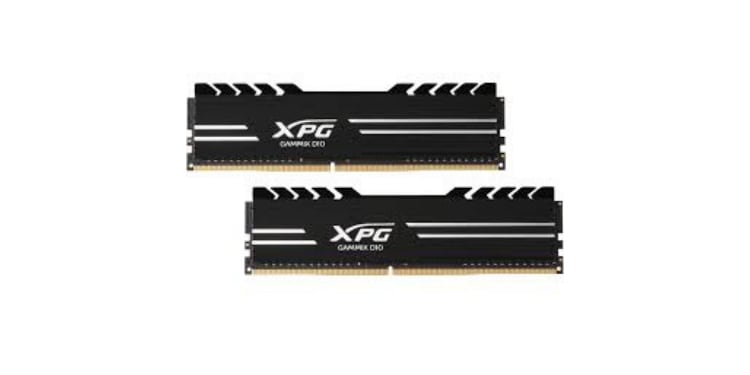
- Capacity: 16GB
- Standard: DDR4
- Speed: 2666 MHz
- CAS: 16
- Configuration: 2x8GB
- Fair price
- Higher-than-standard clock speed
If you want to equip your PC with 16GB RAM but don’t want to break the bank, ADATA has you covered. The XPG Gammix D10 16GB Kit is our pick for best 16GB RAM kit for most people, thanks to its very fair pricing and clock speed bump.
The Kit itself comprises of two 8GB DIMMs, each running at 2666 MHz. This is a bit above the standard 2400 MHz for DDR4 RAM, and this speed bump will manifest as a slight alleviation in FPS drops in games. You also have a red heatsink, which will complement most builds. There are even black and RGB options if those aren’t enough for you. (We recommend against the RGB option, though, since the heatsink itself is still bright red.)
Not too long ago, getting 16GB of RAM for under $100 seemed impossible. Thanks to changing regulations and ADATA, though, it looks like that time is over.
3. Patriot Viper III 16GB DDR3-1866
The best DDR3 RAM for those who need it
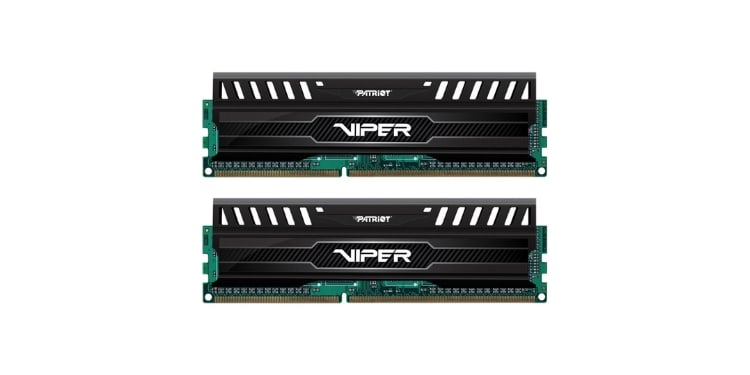
- Capacity: 16GB
- Standard: DDR3
- Speed: 1866 MHz
- CAS: 10
- Configuration: 2x8 GB
- Great pricing
- Very fast for DDR3 RAM
If you’re upgrading an old PC or reviving a used/refurbished one, you may still need DDR3 RAM. If you want to make the most of this upgrade, we recommend the Patriot Viper III kit, which is our top DDR3 RAM kit, at least from a pricing/value perspective. For just above $70, you get a full 16GB of DDR3 RAM.
This kit is comprised of two 8GB DDR3 RAM kits, each rated to run at 1866 MHz. By DDR3 standards, this is actually very good and will be one of your best options if you’re still using a DDR3-based system. In terms of looks, you have a relatively-underplayed black heatsink with a white Viper logo, though there is a brighter blue option if you want a little more visual pop.
If you want to get the best possible DDR3 RAM, continue to the bottom of the article to see our fastest DDR3 RAM kit. Be wary, though: it’ll cost you, and you won’t get as much RAM.
4. Patriot Viper 4 16GB DDR4-3000
The best value 16GB RAM kit, from Patriot
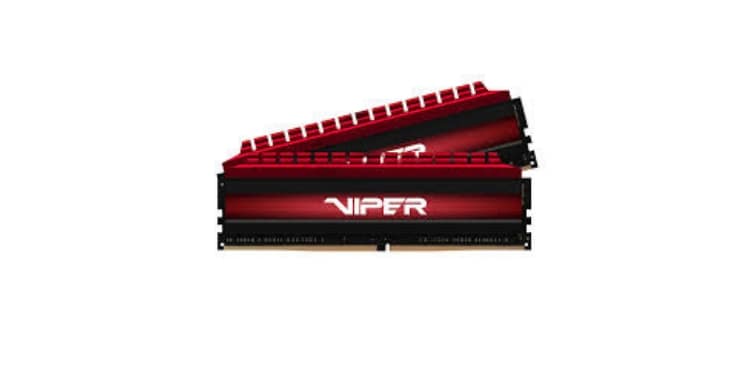
- Capacity: 16GB
- Standard: DDR4
- Speed: 3000
- CAS: 18
- Configuration: 2x8GB
- Great pricing (most of the time)
- High clock speed
- High price fluctuations
- No cosmetic options
If you want the best value for your money in a 16GB RAM kit, then this is the one for you.
The Patriot Viper 4 16GB RAM kit retails for just under $100 on most days, and is comprised of two 8GB DDR4 RAM sticks running at a whopping 3000 MHz each. This is well above the 2400 MHz standard for DDR4 RAM, and leagues beyond anything a DDR3 RAM kit would be capable of.
While not the fastest RAM possible, this is definitely the fastest that you’ll find in this price range. For value-oriented folk who want the best RAM for the money, the Patriot Viper 4 kit is some darn good DDR4 RAM.
The only real downsides are price fluctuations (it changes frequently), and a lack of cosmetic options. You’ll have to deal with the red heatsink if you decide to get this RAM, though since most motherboards are black nowadays, it should still look just fine.
5. Corsair Vengeance RGB Pro 16GB DDR4-3000
RGB champions Corsair present the best RGB RAM
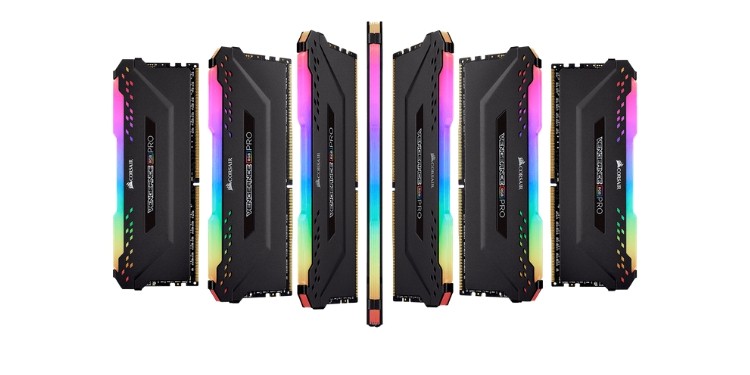
- Capacity: 16GB
- Standard: DDR4
- Speed: 3000 MHz
- CAS: 15
- Configuration: 2x8GB
- The best RGB implementation, hands-down
- Fast
- Plenty of speed options
- Expensive
If all that matters to you is aesthetics, then finding the best RGB RAM is probably important to you. Congratulations: you’ve found it. Corsair was one of the first manufacturers to bring RGB into prominence, and one of the first to do RGB RAM. (Not the first, though: that was actually GeiL.) It’s little surprise, then, that Corsair is one of the top RAM brands when it comes to RGB.
However, that RGB is going to come at a price. This is a 16 GB Kit, comprised of 2 8GB DIMMs, each running at 3000 MHz and outfitted with RGB lighting. At the time of writing, it’s retailing for around ~$150, but you can expect the price to fluctuate quite a bit over the year. Even cheaper models like this one will be much more expensive than their non-RGB counterparts, but chances are you knew that already.
By the way, you can select different speeds, colors, and configurations for this kit. With the 2 x 8 GB configuration, you can go as high as 4266 MHz, which is easily on par with the best RAM kits on the market… but it’s also one of the most expensive RAM kits. Keep this in mind if you make any adjustments.
6. G.Skill Ares 8GB DDR3-2400
This Ares kit is the fastest DDR3 RAM
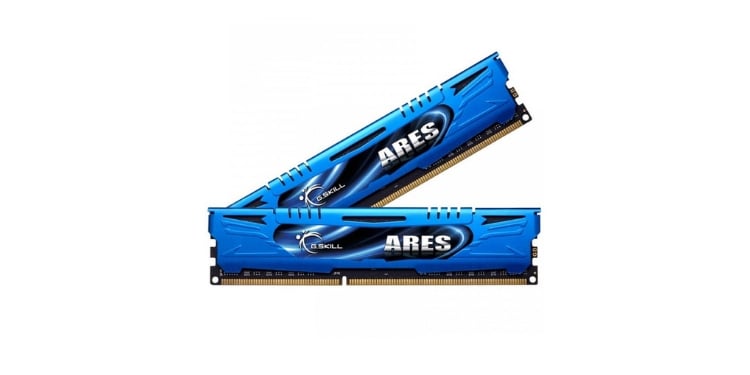
- Capacity: 8GB
- Standard: DDR3
- Speed: 2400 MHz
- CAS: 11
- Configuration: 2x4 GB
- Surprisingly fair pricing
- The best DDR3 RAM speed
If you’re still on a DDR3 motherboard but you still want the best speeds possible, G.Skill has you covered. The G.Skill Ares kit we’ve selected is the fastest DDR3 RAM available on the market right now, providing a whopping 2400 MHz on both of its 4GB DIMMs. At the time of writing, it’s retailing for right around ~$70 on Amazon, which also makes it a fairly compelling value if speed matters more to you than capacity.
The only real downside is in the aforementioned capacity: you only have 8GB of RAM here. For modern gaming and light multitasking, this should be just fine. For multitasking without gaming, this is more than fine. But for particularly extreme multitasking scenarios-- especially streaming gameplay or rendering video-- this won’t cut it, and you may need to double up on your purchase of this kit.
That being said, we still don’t take issue with it. If you’re still on a DDR3-based motherboard, this is definitely one of the best options you have to bring your PC up to par with modern options.
7. G.Skill TridentZ RGB Series DDR4-4266
G.Skill gives us the fastest DDR4 RAM
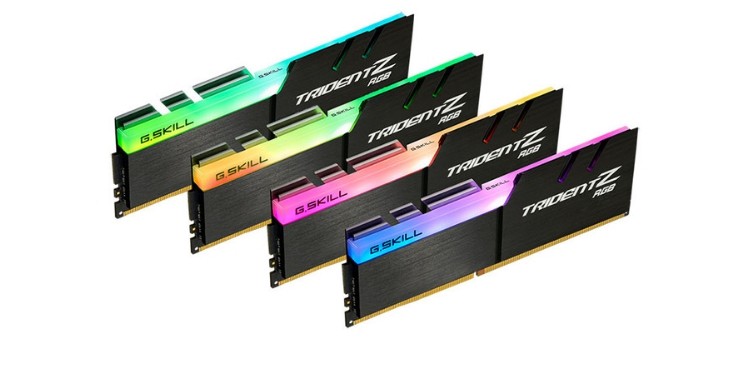
- Capacity: 16GB
- Standard: DDR4
- Speed: 4266 MHz
- CAS: 19
- Configuration: 2x8GB
- Stellar speed
- Decent RGB implementation
- Cheaper than Corsair counterpart
- ...but still very expensive
Last but not least is the G.Skill TridentZ RGB Series, which is the fastest DDR4 RAM that we could find. While there are a few even faster chips out there, these are incredibly rare and not nearly as available as this one. Plus, at a whopping 4266 MHz, you’re really only going to see marginal improvements with higher-rated RAM sticks than these.
The TridentZ series boasts a surprisingly good RGB lighting solution, as well as the aforementioned devastating speeds. This kit comes in the form of two 8GB DIMMs running at 4266 MHz, covered with a black heatsink and outfitted with RGB lights. In terms of pricing, these retail for much cheaper than Corsair’s equivalent option, but this is still more expensive than any other RAM kit on this list. Much like Corsair, G.Skill is one of the best RAM brands on the market.
If you want the best DDR4 RAM, be prepared to pay for it. If you are, though… have at it.
How To Buy The Best RAM For You
In this section, we’re going to go over each of the main specs to take into consideration when trying to find the best ram for gaming. If you’ve gone through the article and aren’t sure about something, this section is for you. If you still have any questions left after you’ve finished, feel free to ask us in the comments below and we’ll be there to help.
DDR3 or DDR4: What’s the best type of RAM?
The first big difference between DDR3 and DDR4 RAM is the fact that they’re different standards. DDR3 RAM is a previous generation of RAM and is supported by older motherboards– pretty much any motherboard manufactured after 2007 and before 2014. DDR4 RAM was introduced in 2014, and has been the standard for RAM in PCs ever since.
The other difference between DDR3 and DDR4 RAM is, well… speed. DDR3 RAM speeds peak at around 2133 MHz, while DDR4 RAM speeds start at 2400 MHz. Since DDR3 is such an old standard, DDR4 RAM is often less expensive than DDR3 on average and much, much faster. However, this doesn’t mean that DDR3 RAM should be foregone entirely.
DDR3 RAM is still necessary for upgrading pretty much any PC built in or before 2014. If you’re a savvy budget gamer, you may also have purchased a used prebuilt desktop to slap a new GPU into– and that desktop is likely to still be using DDR3. There are many reasons to still be browsing for DDR3 RAM in 2019.
However, you shouldn’t be browsing for DDR3 RAM if you’re building a new PC. There is no benefit in doing so, and you’ll also be locking yourself into obsolete motherboards and CPUs. These older-generation motherboards and CPUs will often be inflated in price as well, thanks to the fact that they are no longer being manufactured.
If you’re building a new PC, DDR4 RAM is all that should matter to you. You should only be looking into DDR3 RAM if you’re upgrading an old PC.
Read More: DDR3 vs DDR4 RAM: Which is better?
RAM Capacity
While the rule of “more is better” rings true with RAM, the rule of diminishing returns does as well, especially as far as gaming PC memory is concerned. Past a certain point, especially if you aren’t a very specific type of user, getting too much RAM is simply throwing away money.
Below, we’re going to go over popular RAM configurations, and help you pick which to target.
- 4 GB – The most basic configuration. Okay for common desktop usage and older games, but not at all enough for intense multitasking or modern games.
- 8 GB – The most common configuration. This is great for common desktop usage, and will work well with most modern games, as well. Only extreme multitaskers- ie, livestreamers- need to go beyond this. This is the best amount of memory for gaming.
- 16 GB – The high-end configuration. This is a favorite among enthusiasts, and is very unlikely to be filled by anyone but the most extreme users. Hardcore gamers and livestreamers alike should be more than satisfied with this RAM configuration.
- 32 GB – Unless you’re hosting a server or running Virtual Machines, this RAM capacity and higher is almost completely pointless. You aren’t going to see gaming or common usage gains here at all.
CAS Latency
For the savvier among you, you’ll see the word “Latency” and assume that lower means better. This is… technically true, but the nature of RAM manufacturing means that CAS latency increases as RAM speed does. This doesn’t nullify the performance gains, though– it’s mainly just a quirk of memory technology.
If you’re curious to learn more about CAS Latency, click here to read a writeup from Crucial on the topic.
Otherwise, you don’t really need to worry about it. As long as the CAS Latency number isn’t abnormally high in comparison to the RAM speed being presented (16 is a fairly common number for DDR4, for instance), you have nothing to worry about. All of our picks in this article are well within safe ranges and aren’t going to be bottlenecked by CAS Latency.
RAM Channel Configurations
Another common term you’ll see referenced is “Dual-Channel”. This is the most common RAM configuration in gaming PCs, and the best for most users. Below, we’ll explain the main three configurations and what makes them different.
- Single-Channel – Single-Channel RAM refers to a scenario in which all system RAM is inside a single RAM stick. This prevents the RAM stick from achieving its full potential speed, which can be a particularly harsh bottleneck for DDR3 RAM and lower-clocked DDR4 RAM. Always avoid this when possible.
- Dual-Channel – Dual-Channel RAM refers to the scenario where two identical RAM sticks are run in the same system. In this scenario, the RAM sticks are able to work together and reach their full, rated RAM speeds. This is ideal in all scenarios.
- Quad-Channel – Quad-Channel RAM refers to- you guessed it- the scenario where 4 identical RAM sticks are run in the same system. While this does result in increased memory bandwidth, however, the performance gains are marginal-to-nonexistent, especially in games. The only reason to run QC RAM is if you’re upgrading the capacity of a pre-existing DC setup, not for performance.
RAM Speed, and The Effect It Has
Last but not least, let’s talk RAM speed. Some enthusiasts will claim that RAM speed makes no difference at all, and capacity is what matters. Others will claim that RAM is one of the most important upgrades you can make to your system, and if you’re running anything less than a Quad-Channel setup, you’re a drooling idiot.
Neither of these statements is quite true… at least entirely; they both hold some truth, though.
Capacity is definitely more important than RAM speed. It determines how much your PC is capable of handling at once. RAM speed also seems to make no meaningful impact on average or maximum FPS in games, which lends further credence to the idea that it doesn’t really matter that much.
Speed does matter, though, at least a bit. You can see it come into effect if you take 8GM RAM and run it in Single-Channel and compare it to running two identical 4GB RAM in Dual-Channel. The Single-Channel– especially if it’s DDR3– will severely bottleneck your CPU. In fact, this bottlenecking would still occur even if you were using the best DDR4 RAM. As such, you need at least a Dual-Channel setup to achieve the full potential of both your RAM sticks and your CPU.
The other scenarios where RAM speed matters are non-gaming scenarios. Think video rendering and more advanced, professional tasks.
RAM speed even matters in gaming! While it’s true that RAM speed has little-to-no impact on average or maximum FPS, it does have a meaningful impact on minimum FPS. In other words, the faster your RAM is, the less severe your FPS drops will be whenever they occur. This is great if you want a smoother, more consistent gaming experience.
